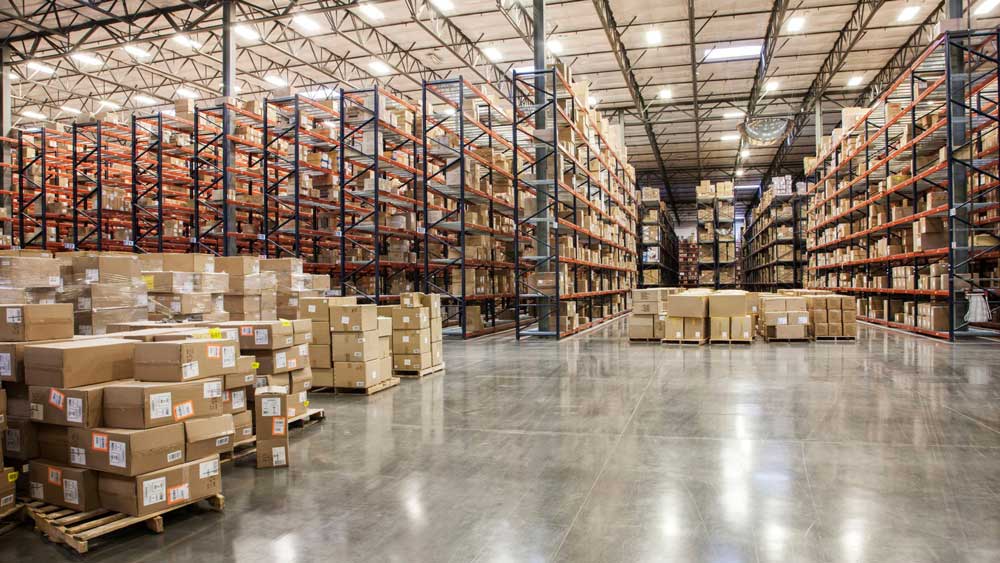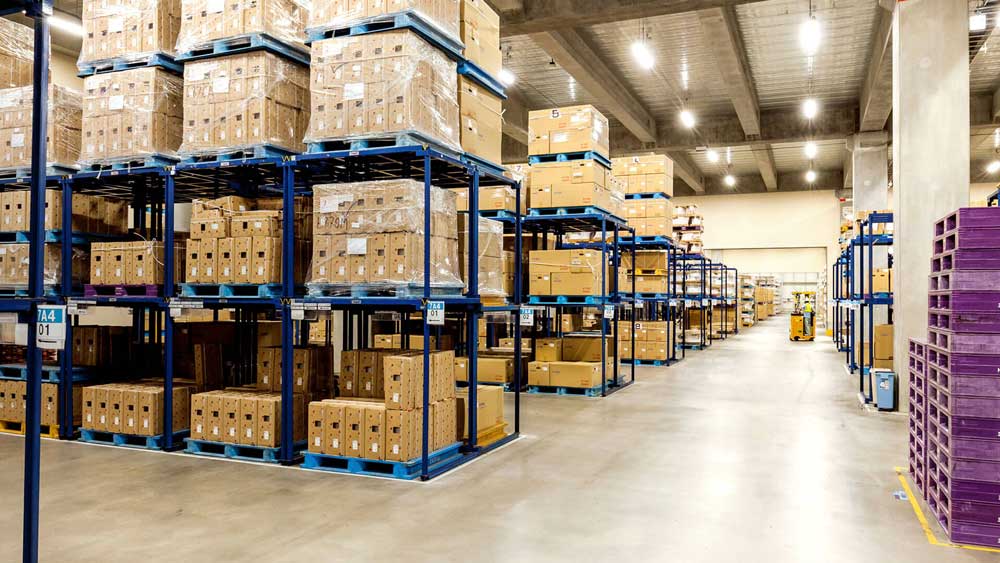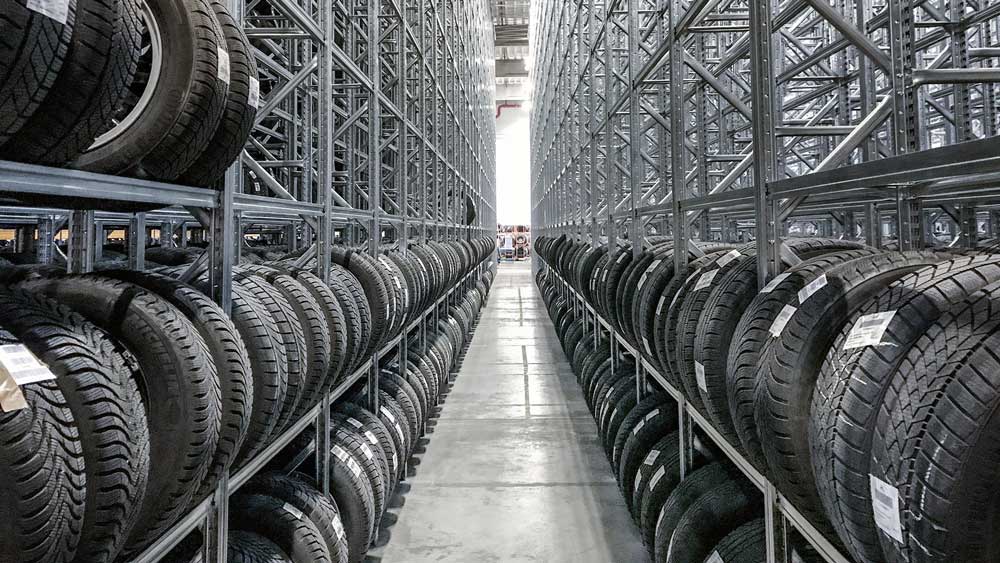A dry storage warehouse is a facility designed for the storage of non-perishable goods and materials in a controlled environment. The term “dry” refers to the absence of temperature and humidity control, distinguishing it from facilities like refrigerated or cold storage warehouses.
Dry storage warehouses are typically used for storing items such as packaged foods, electronics, textiles, and other products that do not require specific temperature or humidity conditions for preservation.
These warehouses aim to maintain a stable and dry environment to prevent spoilage, degradation, or damage to the stored goods. They often feature standard racking systems, pallets, and shelving for efficient storage and retrieval.

What are the benefits of a dry storage warehouse?
Dry storage warehouses offer several benefits that contribute to efficient and effective storage of non-perishable goods. Some key advantages include:
Cost-Effective Storage
Dry storage warehouses are generally more cost-effective to build and operate compared to temperature-controlled facilities. This makes them a suitable option for businesses that do not require specific climate conditions for their products.
Versatility
Dry storage warehouses are versatile and can accommodate a wide range of products, from electronics and textiles to packaged foods and consumer goods. This versatility makes dry storage warehouses suitable for use in a wide range of industries.
Lower Operating Costs
Without the need for temperature and humidity control, dry storage warehouses typically have lower operating costs. This can lead to more affordable storage solutions for businesses, especially those dealing with non-perishable items.
Ease of Maintenance
The lack of complex temperature and humidity control systems simplifies maintenance and reduces the risk of equipment failure. This can result in less downtime and lower maintenance costs over time.
Accessibility and Efficiency
Dry storage warehouses are designed for easy accessibility and efficient storage. Standardized racking systems, pallets, and shelving allow for organized storage and quick retrieval of goods, enhancing overall operational efficiency.
Extended Shelf Life
While not suitable for perishable goods, dry storage warehouses help extend the shelf life of non-perishable products by providing a stable and controlled environment that minimizes the risk of spoilage, degradation, or damage.
Scalability
Dry storage facilities can be easily scaled up or down based on business needs. This scalability allows businesses to adapt to changes in inventory volume and overall storage requirements.
Security Measures
Proper security measures can be implemented in dry storage warehouses to safeguard valuable goods. This may include surveillance systems, access control, and other security protocols to prevent theft and unauthorized access.

What products are suitable for storage in dry storage warehouses?
Dry storage warehouses are suitable for a wide range of non-perishable goods and materials. Here are some examples of products that are commonly stored in dry storage warehouses:
Packaged Foods
Dry and non-perishable food items such as canned goods, grains, cereals, pasta, and snacks are well-suited for storage in dry warehouses.
Consumer Goods
Various consumer products, including electronics, household appliances, clothing, footwear, and other non-perishable items, are often stored in dry storage facilities.
Textiles
Fabrics, clothing, linens, and other textile products are ideal for dry storage to prevent moisture-related issues like mold and mildew.
Paper Products
Dry storage warehouses are suitable for storing paper goods such as books, stationery, and packaging materials.
Building Materials
Construction materials like lumber, drywall, tiles, and other non-perishable building supplies can be stored in dry warehouses.
Pharmaceuticals
Some pharmaceutical products that do not require specific temperature control can be stored in dry storage warehouses.
Chemicals
Non-hazardous chemicals and industrial supplies that do not require specialized storage conditions can be stored in dry warehouses.
Plastic Products
Various plastic items, including containers, packaging materials, and plastic goods, can be stored in dry storage facilities.
Automotive Parts
Spare parts, tires, and other non-perishable automotive products can be efficiently stored in dry warehouses.
Home and Garden Products
Non-perishable items such as gardening tools, fertilizers, and home improvement supplies are suitable for dry storage.

It’s important to note that while dry storage warehouses are versatile, they are not suitable for items that require specific temperature and humidity conditions for preservation. Perishable goods, pharmaceuticals with strict temperature requirements, and certain chemicals may need specialized storage facilities. Proper inventory management and adherence to recommended storage guidelines are crucial to ensuring the integrity and quality of the stored products in dry storage warehouses.
Important factors in keeping your warehouse dry
Maintaining a dry environment in a warehouse is crucial for preserving the integrity of stored goods and preventing issues such as mold, mildew, and degradation. Here are important factors to consider in keeping your warehouse dry:
Proper Ventilation:
Ensure adequate ventilation to allow for the exchange of air within the warehouse.
Use ventilation systems, such as fans or exhaust systems, to reduce humidity and promote air circulation.
Roof and Wall Maintenance
Regularly inspect and maintain the roof and walls to prevent leaks that could introduce moisture into the warehouse.
Repair any damaged roofing or siding promptly to avoid water infiltration.
Flooring
Choose flooring materials that resist moisture absorption and are easy to clean.
Regularly inspect and repair any cracks or damage in the flooring to prevent water seepage.
Sealing Entry Points
Seal doors, windows, and other entry points to prevent water intrusion during rain or inclement weather.
Install weather stripping and door sweeps to minimize air and moisture infiltration.
Humidity Control
Use dehumidifiers to control humidity levels within the warehouse, especially in areas prone to high humidity.
Monitor humidity regularly and adjust ventilation and dehumidification systems as needed.
Temperature Control
While dry storage warehouses do not require temperature control, maintaining a stable ambient temperature can help prevent condensation.
Insulate the warehouse to minimize temperature fluctuations and reduce the risk of moisture-related issues.
Proper Pallet Storage
Elevate pallets off the floor using pallet racks or other storage systems to allow air circulation and prevent direct contact with potential moisture.
Use moisture-resistant pallets or pallet covers to protect goods from moisture transfer.
Regular Inspections
Conduct regular inspections of the entire warehouse to identify and address potential sources of moisture.
Inspect plumbing systems, HVAC units, and any equipment that may produce or contribute to moisture.
Water Drainage Systems
Ensure proper drainage around the warehouse to prevent water pooling.
Clear gutters and downspouts regularly to avoid blockages that could lead to water accumulation.
Employee Training
Relevant training is provided to warehouse operators, and regular inspections are carried out for water damage, safety in the use of shelves and the structural safety of the warehouse space.

By proactively addressing these factors, you can create and maintain a dry storage environment that promotes the longevity and quality of the goods stored in the warehouse. Regular inspections, timely repairs, and effective moisture control measures are key to preventing issues related to excess humidity and moisture.
We can help you complete your dry storage warehouse
In conclusion, a well-maintained dry storage warehouse serves as the backbone for businesses dealing with non-perishable goods. The benefits are clear, from cost-effective storage solutions to scalability and ease of maintenance. The versatility of dry storage warehouses allows for the accommodation of various products, ranging from packaged foods to consumer goods, textiles, and beyond.
As we navigate the landscape of efficient warehousing solutions, it’s essential to recognize the critical role that organizations like ours, HEDA, play in shaping the industry. As a dedicated shelf manufacturer, HEDA understands the importance of providing reliable storage solutions that align with the unique needs of businesses operating in dry storage environments.
So, as you plan the blueprint of your dry storage warehouse or consider optimizing your existing space, remember that the right storage solutions can make all the difference. With HEDA by your side, your journey towards a seamlessly organized and efficiently managed dry storage facility takes a confident step forward. Choose excellence, choose reliability – choose HEDA.


